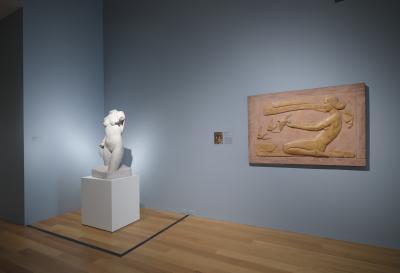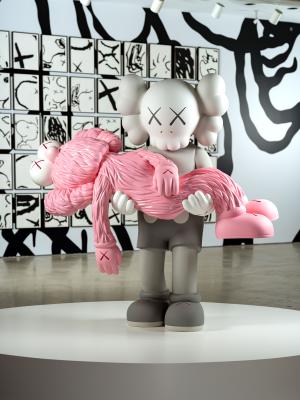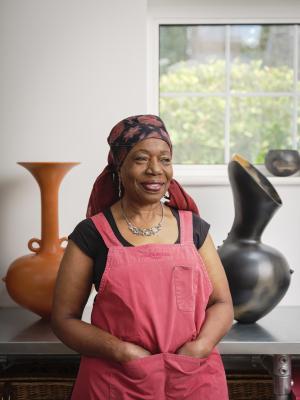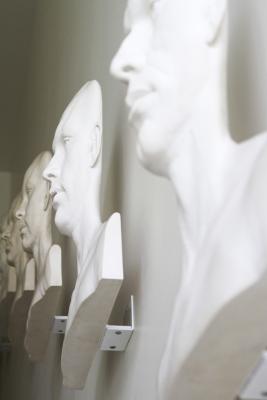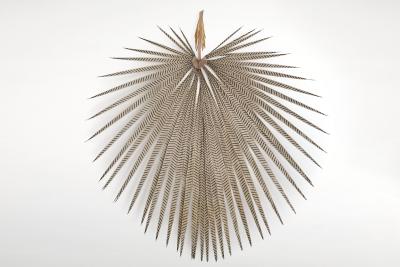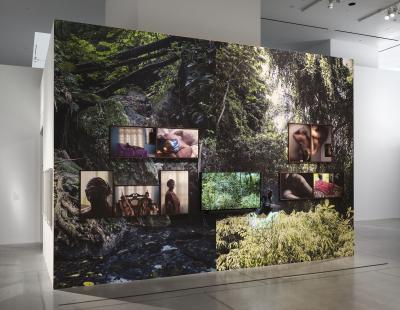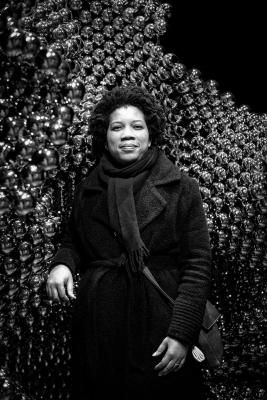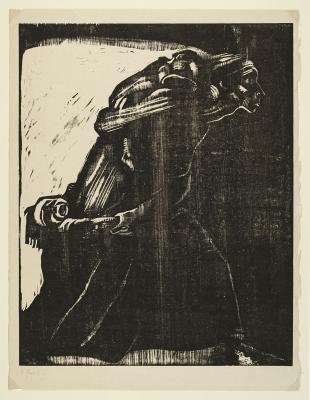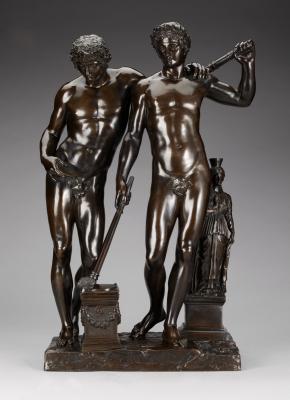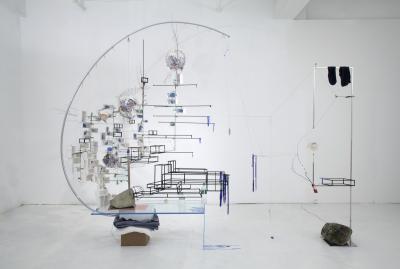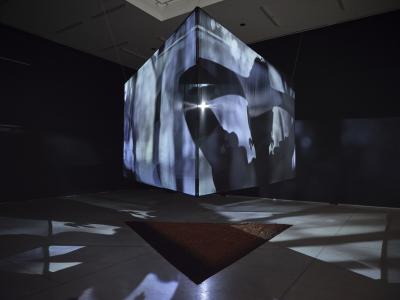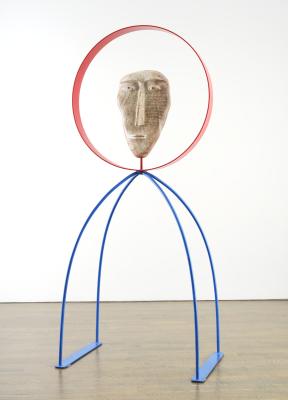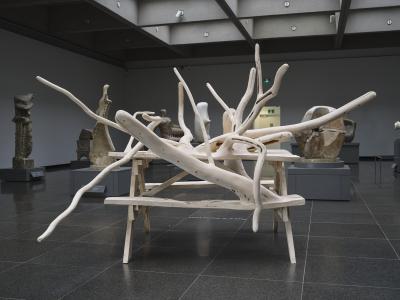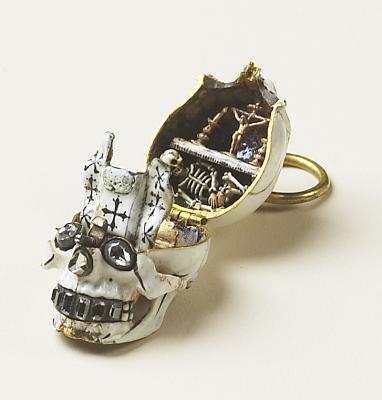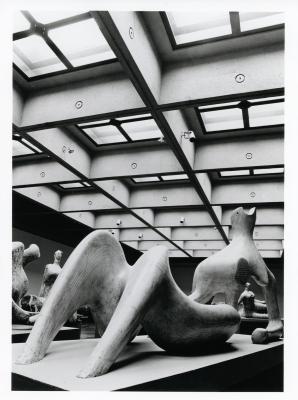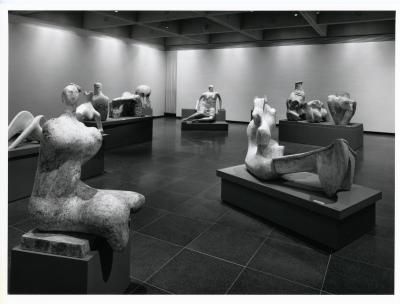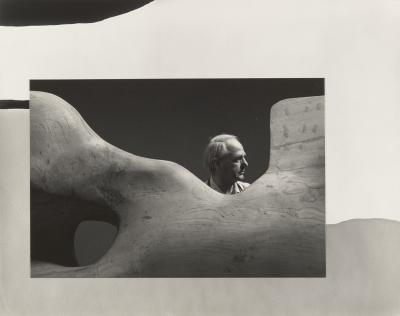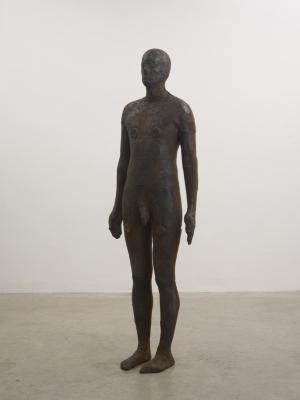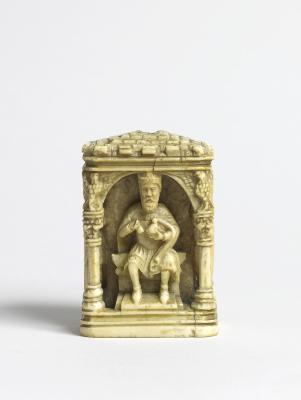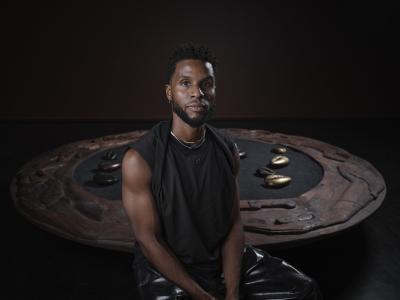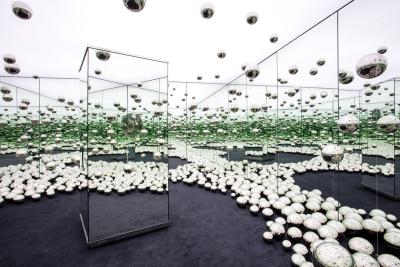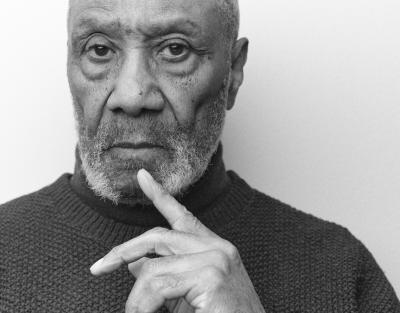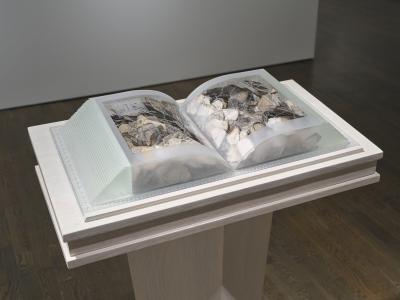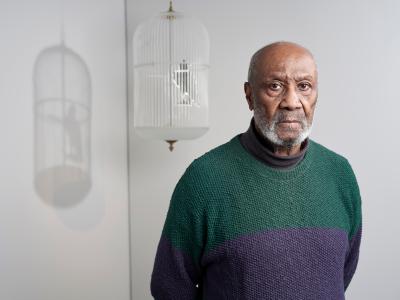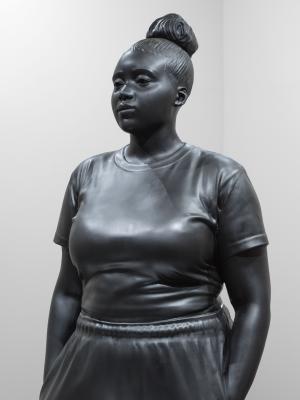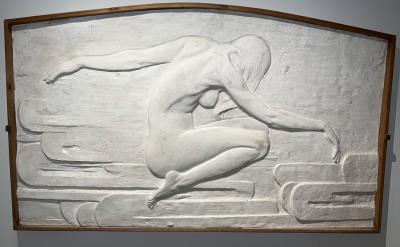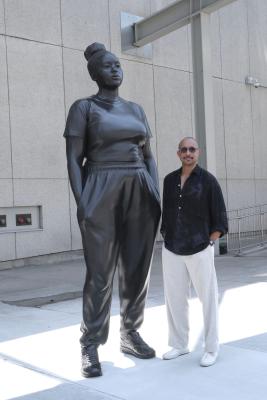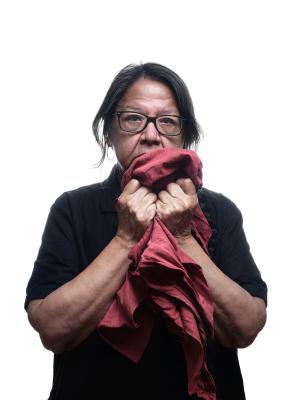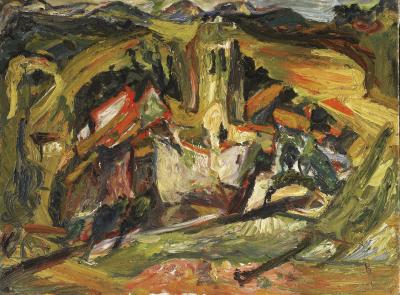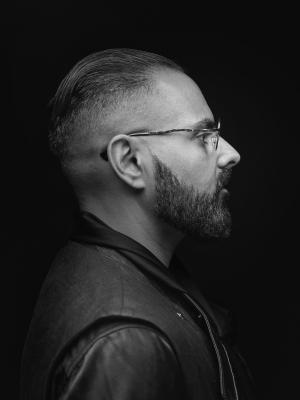Beading invisible bonds with Sharl G. Smith
The artist speaks on the necessity of “invisible” bonds for both her sculptures and for society

Sharl G. Smith. Photo by Alexander Jacobi.
Relationships — whether it’s our loved ones, the transit driver getting us to work on time, or the land we live on, we wouldn’t be able to function without connections. The same goes for artist Sharl G. Smith’s sculptures.
Whether she’s using metal beads the size of baseballs or traditional glass beads, the AGO’s current AGO X RBC Artist-in-Residence bead-stitches each sculpture the same way: one bead at a time, each new bead entering a relationship with the ones that came before it. Like a suspension bridge, Smith’s sculptures maintain their form through tension, a force created by the way Smith connects the beads.
“I constantly think about how these beads are modular and cellular like individuals,” Smith shared with Foyer. “But to make things work, I’m bonding and weaving them together.”
Sharl G. Smith, Embrace II, 2023. Photo by Conan Stark.
Embodying the relational nature of her sculptures, Smith will lead a live bead-weaving ceremony in her performance (a)Mending: the ọ́bị̀à experience, taking place on Sunday, July 14, at 2 pm in Walker Court at the AGO. Examining the Caribbean’s connection to Indigenous West African culture, the performance incorporates sounds and movements that were adapted from West African culture into Afro-Creole religions during the transatlantic slave trade.
For Smith, the act of bead stitching is just as important as the sculpture itself. Her AGO performance aims to emphasize the value of invisible labour and bonds.
“It’s the things that are invisible that are so valuable, that are holding us up,” Smith explained. “That’s why I want to do more demonstrative things. When you’re making [a sculpture] at a large scale, you really have to communicate - it’s a group effort. The moment someone releases tension, we have to start again. People see the beads, but they don’t understand the core [keeping it together] because it’s invisible, and I think that is a metaphor for so many things.”
Installation view, Beyond the Bead, September 23, 2023 - January 7, 2024, The Canadian Clay & Glass Gallery. Photo by Conan Stark.
Sharl G. Smith, Loss, 2021. Photo by Conan Stark.
Smith began beading after a flare-up of her chronic illness and the passing of her father. Beading became her way of emotionally regulating, and it was also an accessible art form she could practice while travelling in and out of the hospital for two years. Starting with creating vignettes of her favourite paintings, her beadwork soon turned sculptural thanks to her background as an architectural professional.
“Architecturally, you’re trained to think spatially, and you try to define spaces in a way that creates psychological and emotional well-being,” she said. “[In 2009], I was working in a firm where they did Japanese joinery, and that practice is about mastery. The carpenters would slowly sharpen their blades, and it was so spiritual and elevated. The beauty of a slow art left an impression on me, and that’s why I really took to beadwork.”
While Smith enjoyed experimenting with beading geometric sculptures, it wasn’t until she opened up about her struggles with her mental health, spirituality, and femininity that she found the crux of her work: invisible connections that shape our communities and keep us functioning.
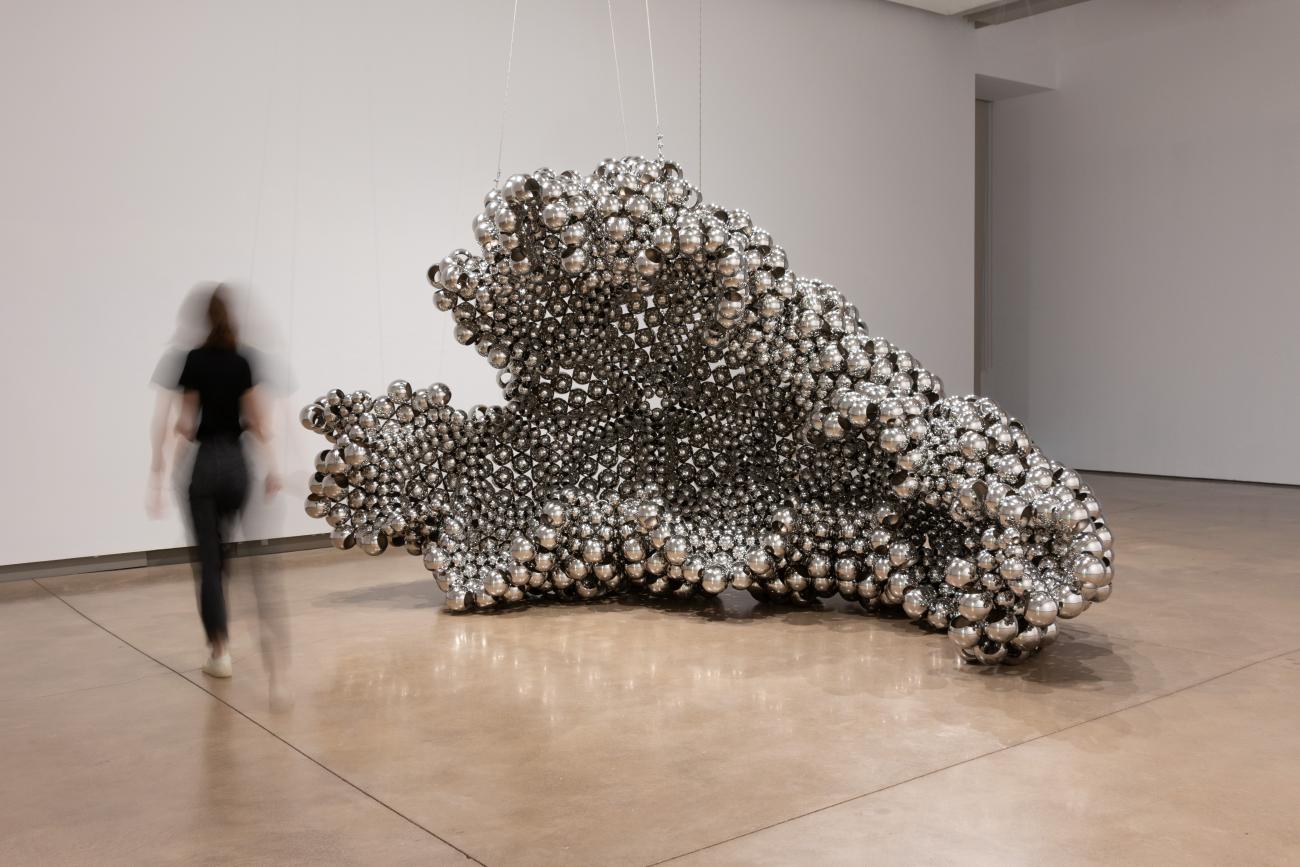
Sharl G. Smith, Shelter II, Stainless steel spheres, 2023. Photo by: Jordyn Stewart.
“Now, I connect beadwork with things that are undervalued but are core structural parts of society,” she said. “I’m creating shapes that reflect how society could ideally function. Things like care and maintenance are invisible bonds and relationships that we not only undervalue but actively devalue. The very first large sculpture I created was called Value Shift because it’s how we value certain things that is the problem. We don’t have to destroy capitalism; a value shift can happen anytime.”
This revelation inspired Smith to explore invisible connections shaping her own identity. During her residency, Smith delved deeper into deconstructing her Fundamentalist Christian upbringing in Jamaica. She spent her residency examining the connections between West African culture and devalued and demonized Afro-Creole religions such as ọ́bị̀à, Revivalism, and Myal.
Through her research, Smith came to learn that the demonization of Afro-Creole religions was a calculated method used to take power away from enslaved people brought to the Caribbean.
“These religions are healing practices that gave power to slaves, and that is the very reason it was demonized,” she said. “You can’t oppress people if they feel powerful — you tell them [their traditions are] backward, savage, and demonic - it's the same thing that happened to Indigenous people [in Canada]. The crazy thing is that our own people perpetuate [this demonization] in Jamaica.”
Sharl G. Smith, Unfurling, 2022. Photo by Conan Stark.
Her bead-weaving performance will centre on energy and how Afro-Creole religions adapted the concept from West African practices. Understanding and harnessing the spiritual power of energy is something Smith believes our society currently needs.
“The world is made of energy; our bodies are made of energy,” she said. “Drumming circles weren’t just ‘savages’ dancing in circles, they were generating vibrations for healing and catharsis. When you’re stressed out, it’s an energy you need to shift, and certain rhythms will shift that energy. It’s a science of sound.”
Smith hopes people not only connect with the healing energy of her performance but also shift how they value Indigenous healing practices from around the world.
“The benefits of all Indigenous wisdom practices are accessible to humanity, and we’re really starving for that kind of living — to thrive spiritually as opposed to being on the treadmill of capitalism. We’re all dying, and I think we know it.”
All are invited to feel the energy of Smith’s RBC X AGO Artist-in-Residence performance (a)Mending: the ọ́bị̀à experience on Sunday, July 14, at 2 pm in Walker Court at the AGO.


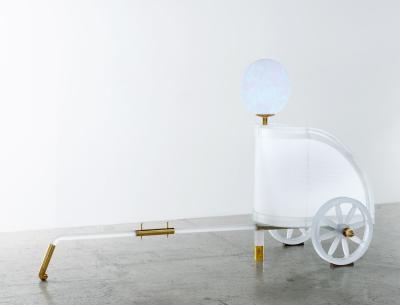
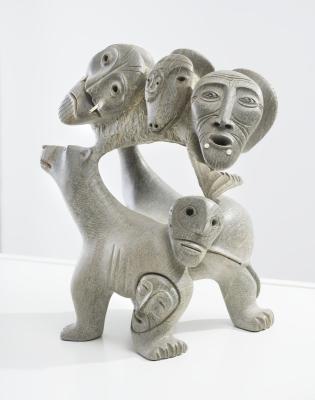


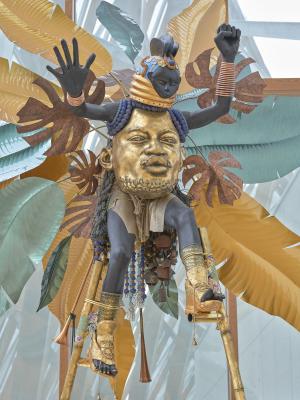


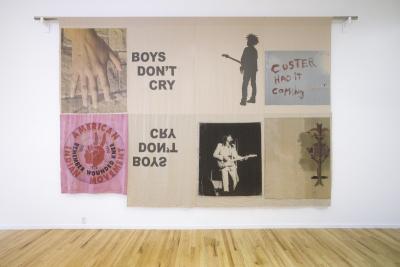
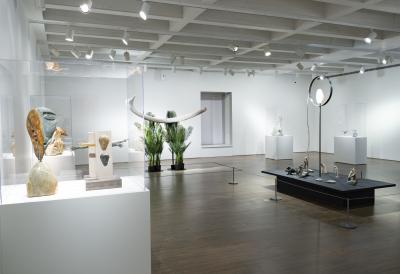
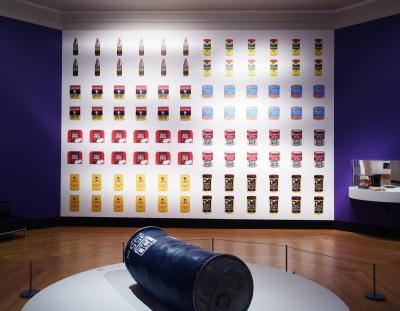


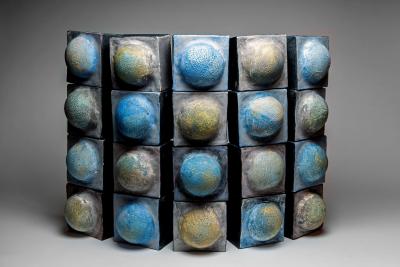
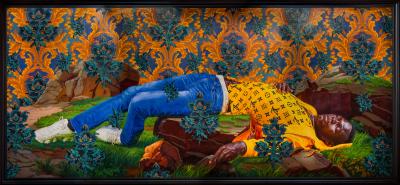
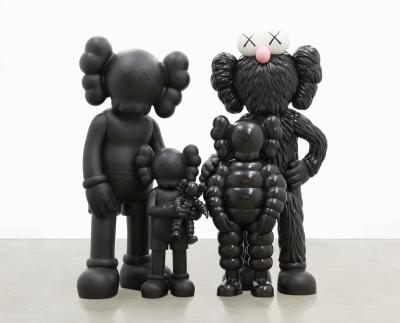
![Keith Haring in a Top Hat [Self-Portrait], (1989)](/sites/default/files/styles/image_small/public/2023-11/KHA-1626_representation_19435_original-Web%20and%20Standard%20PowerPoint.jpg?itok=MJgd2FZP)

